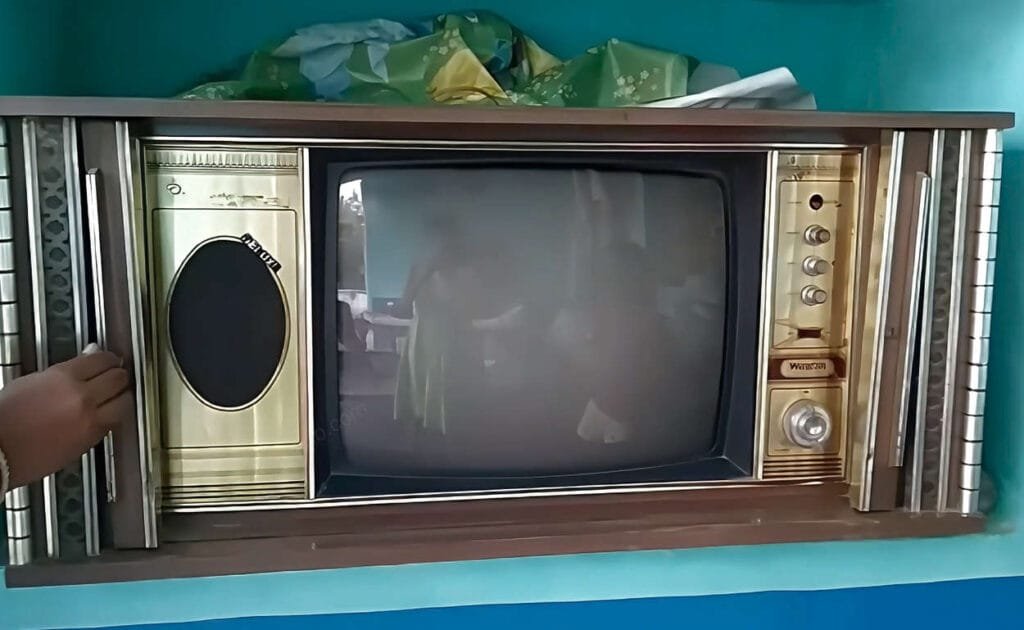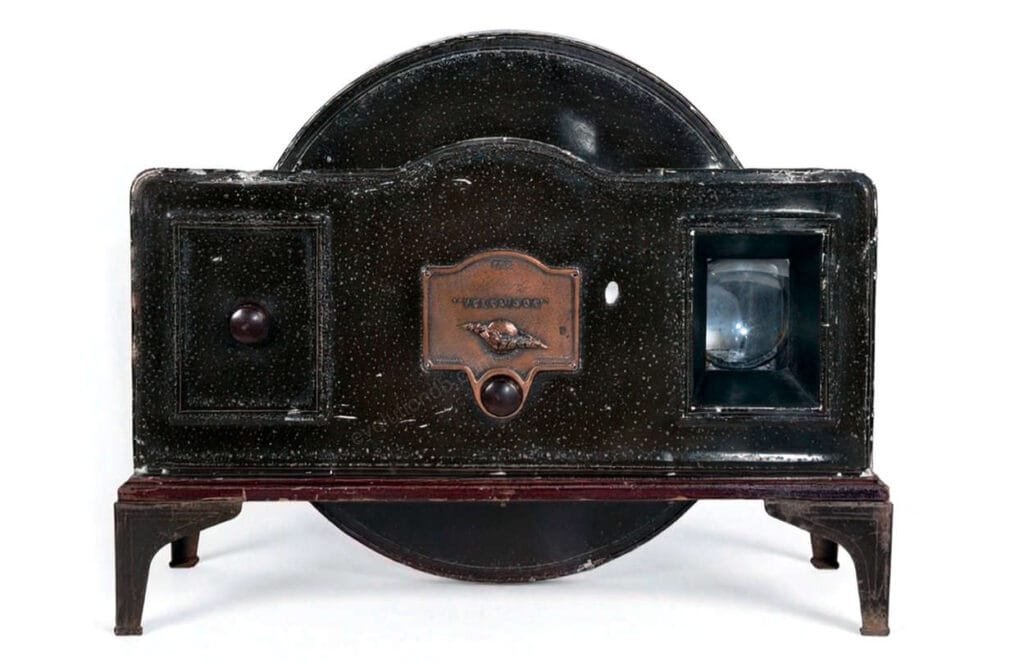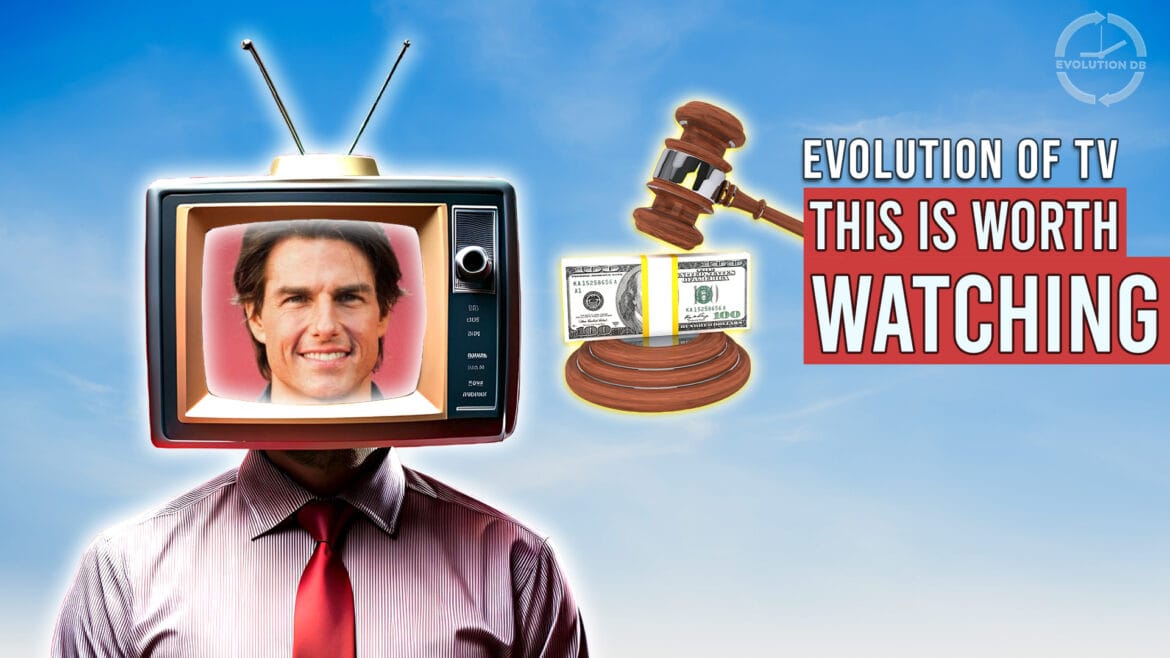Table of Contents
Today, we’re diving into the amazing television history and TV evolution over 100 years of timeline. From its humble beginnings to the smart TVs we have now, it’s been quite a journey.
Have you ever wondered how we got from fuzzy black-and-white screens to crystal-clear 8K displays? Well, you’re in for a treat! Today, we’re diving into the amazing history and evolution of television. From its humble beginnings to the smart TVs we have now, it’s been quite a journey. So, grab your remote and get comfy as we channel surf through time!

Mechanical Television Era
Let’s start at the very beginning.
Back in the 1830s, scientists discovered electromagnetism. Little did they know, this would be the spark that led to the invention of TV as we know it.
Fast forward to the 1920s

This is when the first practical TV systems came to life. They used something called mechanical scanning disks to create images. Imagine a spinning disk with holes in it. As it spun, it would scan an image line by line. Pretty clever, right? But wait, there’s more!
In 1925, a guy named John Logie Baird made a big breakthrough. He built the first working TV system. It could show 30 lines of resolution and 5 frames per second. That might not sound impressive now, but back then, it was huge!
By 1928, these mechanical TVs got even better. They could show 48 lines at 15 frames per second. But there was still a problem – the picture quality wasn’t great.
Electronic Television Breakthrough

Then came the electronic TV revolution that solved many problems of the mechanical systems. The Cathode-ray tube, or the CRT, invented by Karl Ferdinand Braun in 1897, became a key part of TVs for many years.
But the real game-changer was Philo Farnsworth in 1927. He created the first fully electronic TV system. It could capture, send, and show moving images electronically. Farnsworth’s system offered better picture quality and faster scanning. It laid the groundwork for modern television. By 1936, the BBC began the world’s first public TV service using electronic technology.
Black & White Era
The first commercial television sets became available in the late 1920s. These early models had small screens and low resolution in black & white.
In 1939, RCA – The Radio Corporation of America introduced the TRK-12, one of the first mass-produced TVs. It had a 12-inch screen and cost $600. That might not sound like much, but it’s over $12,000 in today’s money!
TV sales grew slowly at first. By 1947, only 170,000 sets were in use in the U.S. The average TV in 1949 had a 10-inch screen and cost 269 Dollars. Larger 16-inch and 19-inch models arrived in the early 1950s. But things were about to change.
Rise of Broadcast Television
In the 1940s, TV stations started broadcasting regularly. NBC and CBS began showing programs in New York City in 1941. More and more stations popped up across the country. By 1954, there were 354 TV stations on air.
People loved watching shows like Howdy Doody, I Love Lucy, and The Ed Sullivan Show.
By 1955, over half of the homes in the U.S. had a TV.
The Rise of Color TVs
In 1954, RCA – The Radio Corporation of America introduced the first color TV system. It used three electron beams to create red, green, and blue images.
At first, color TVs were expensive and the picture wasn’t great. But by the 1960s, they got better and cheaper. More shows started broadcasting in color. This made people want to buy color TVs.
By 1972, over half of U.S. homes had a color television.
The 1960s also brought us portable TVs. These used transistors instead of vacuum tubes. This made them smaller and they used less power. Now people could watch TV anywhere!
Around the same time, cable TV started to grow. It began in the late 1940s to help people in rural areas get better TV reception. By the 1970s, cable offered more channels and better picture quality.
This Color and Black-and-white CRT TV trend continued even in the 1980s. Televisions became cheaper and, by the mid-90s, it was common to see a TV in almost every household.
The late 1990s and early 2000s brought even more changes. Digital TV became the new normal. It offered sharper images, better sound, and cool new features.
High-definition TV, or HDTV, became popular in the 2000s. It had a much clearer picture than standard TV. Some companies even tried to make 3D TV a thing. It used special glasses to create a 3D effect. But it didn’t really catch on with most people.
Evolution of flat-panel TVs
In the late 1990s and early 2000s, flat-panel displays started to replace bulky CRT TVs. The first widely available flat-panel technology was plasma. Plasma TVs offered excellent picture quality and large screen sizes. They were popular in the early 2000s but had issues with screen burn-in and high power consumption.
Next came LCD TVs, LCD stands for “Liquid Crystal Display”. These were thinner and lighter than plasma TVs. They also used less power and didn’t have the burn-in problem. LCD TVs quickly became the most popular type of flat-panel display.
In the mid-2000s, LED TVs entered the market. LED stands for “Light-Emitting Diode”. These were actually LCD TVs with LED backlighting. They offered better picture quality and were even more energy-efficient. LED TVs became the new standard for flat-panel displays.
The latest development in flat-panel technology is OLED (Organic Light-Emitting Diode) TVs. OLED TVs can turn individual pixels on and off completely. This gives them perfect black levels and incredible contrast. They’re also incredibly thin, but they’re still quite expensive.
Now we have TVs in 4K and 8K crystal clear resolution. These have incredibly detailed pictures.
Most of the TVs we have now are smart TVs that connect to the internet. You can use them to stream shows and use apps. The internet has changed TV even more in recent years. Now we have streaming services like Netflix, Hulu, Amazon Prime Video, Disney Hotstar and so on. These streaming services even make their own shows and movies, just like traditional TV networks. Also, these smart TVs are integrated with mobile device operating systems like Android, Apple-TV, etc. So the TV operating system and firmware are regularly updated automatically by software updates and hence you don’t need to upgrade your TVs that often.
Many people now watch TV through apps on their phones, tablets, or computers. This has led to fewer people taking subscriptions to traditional cable TV.
Today’s TVs are pretty amazing. They have voice control and AI assistants. You can change channels or search for shows just by talking to your TV!
Some shows are even experimenting with augmented reality (AR) and virtual reality (VR). This could make watching TV more interactive and immersive in the future.
Wow, what a journey! From mechanical disks to smart TVs, television has come a long way. Who knows what exciting changes we’ll see in the future? Maybe we’ll have holograms in our living rooms next! What do you think TV will be like in 10 or 20 years? Please share your ideas in the comments below.

